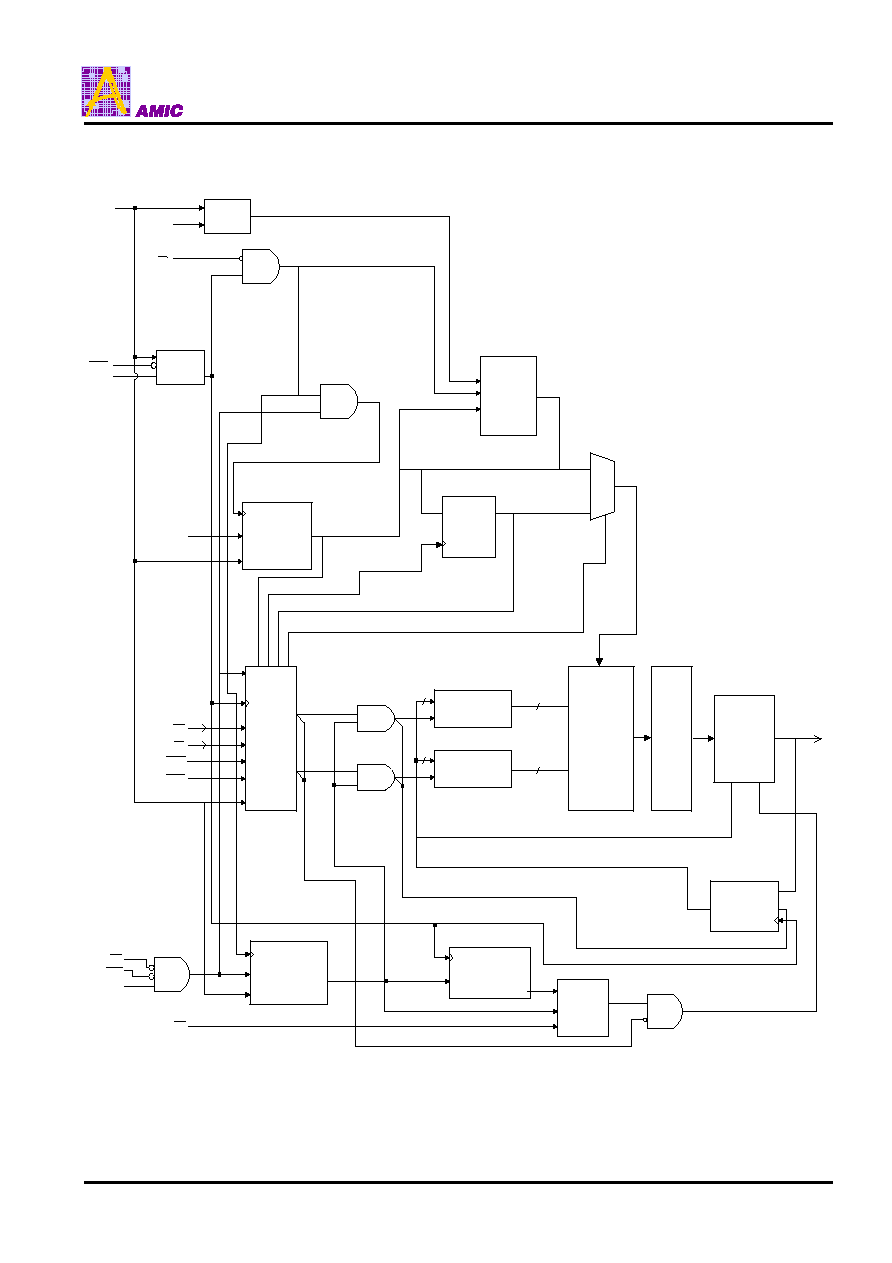
A67P93181/A67P83361
Preliminary
512K X 18, 256K X 36 LVTTL, Flow-through ZeBL
TM
SRAM
PRELIMINARY (July, 2005, Version 0.0)
2
AMIC Technology, Corp.
Features
Fast access time: 6.5/7.5/8.5 ns
(153, 133, 117 MHz)
Zero Bus Latency between READ and WRITE cycles
allows 100% bus utilization
Signal +2.5V
�
5% power supply
Individual Byte Write control capability
Clock enable (
CEN
) pin to enable clock and suspend
operations
Clock-controlled and registered address, data and
control signals
Registered output for pipelined applications
Three separate chip enables allow wide range of options
for CE control, address pipelining
Internally self-timed write cycle
Selectable BURST mode (Linear or Interleaved)
SLEEP mode (ZZ pin) provided
Available in 100 pin LQFP package
General Description
The AMIC Zero Bus Latency (ZeBL
TM
) SRAM family
employs high-speed, low-power CMOS designs using an
advanced CMOS process.
The A67P93181, A67P83361 SRAMs integrate a 512K X
18, 256K X 36 SRAM core with advanced synchronous
peripheral circuitry and a 2-bit burst counter. These SRAMs
are optimized for 100 percent bus utilization without the
insertion of any wait cycles during Write-Read alternation.
The positive edge triggered single clock input (CLK)
controls all synchronous inputs passing through the
registers. The synchronous inputs include all address, all
data inputs, active low chip enable (
CE
), two additional chip
enables for easy depth expansion (CE2,
CE2
), cycle start
input (ADV/ LD ), synchronous clock enable (
CEN
), byte
write enables (
BW1
,
BW2
,
BW3
,
BW4
) and read/write
(R/
W
).
Asynchronous inputs include the output enable (
OE
), clock
(CLK), SLEEP mode (ZZ, tied LOW if unused) and burst
mode (MODE). Burst Mode can provide either interleaved
or linear operation, burst operation can be initiated by
synchronous address Advance/Load (ADV/LD ) pin in Low
state. Subsequent burst address can be internally
generated by the chip and controlled by the same input pin
ADV/LD in High state.
Write cycles are internally self-time and synchronous with
the rising edge of the clock input and when R/
W
is Low.
The feature simplified the write interface. Individual Byte
enables allow individual bytes to be written.
BW1
controls
I/Oa pins;
BW2
controls I/Ob pins;
BW3
controls I/Oc pins;
and
BW4
controls I/Od pins. Cycle types can only be
defined when an address is loaded.
The SRAM operates from a +2.5V power supply, and all
inputs and outputs are LVTTL-compatible. The device is
ideally suited for high bandwidth utilization systems.




